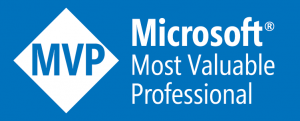Life In A Startup Is Fast
Too many companies fail because they are unable to set and achieve milestones. As if bringing a new concept to market isn't tough enough, they fail to recognize the cause – a lack of metrics, leadership, and process. Startups inherently fail. But why? The reality is that far too many of today’s thought leaders on management have it all wrong.
Life on the early American Frontier could be harsh, and sometimes very short. Towns emerged practically overnight. Populations in some areas exploded, only to recede and fade within a few short years. With limited life-sustaining resources in the untamed wilderness, ghost towns began to dot the landscape within a few short years of the migration westward.
Why did some of these people fail? Arguably, not every problem was man-made. Newly developed farmland was more susceptible to drought and pestilence, which, at times, destroyed crops and valuable grazing land. But more often than not it was due to shortsighted management. That’s right. Poor planning, pure and simple. Many of the pioneers failed to create a constancy of purpose, and work together toward a common goal. Instead, they allowed greed to drive their activities – greed for gold, greed for land.
The history of the American Frontier is a history of the “quick win.” Get lucky and move on without worrying about long-term success, or even sustainability. For some it was gold, for others it was land. These examples are easy enough to identify. But for most of the men and women who made the journey from distant lands to the untamed wild of America, the goal was larger than that – it was the freedom and the opportunity to build a new life.
This closely parallels the beginning of many modern day companies – an individual or team of entrepreneurs attempting to build a better product, to better meet a customer’s needs, to find a better way. But even the best intentions require proper planning. Townships on the early American Frontier were built upon the hopes and hard work of its people, but even the best intentions do not ensure success. The government’s decision to build the railroad 100 miles away from a well-established town could transform any thriving community into a ghost town, and usually did.
Back in the modern business world, many companies have experienced the same misfortunes. Would-be entrepreneurs who mortgage their lives and their belongings to build a business find that sweat equity alone cannot guarantee success. Many do not understand that startups inherently fail. As if bringing a new concept to market isn't difficult enough, too much is left up to fate. They are more likely to pick the wrong technology or invest time in the wrong market segments than achieve even moderate success. And yet, by first fully evaluating their opportunities and adhering to some basic planning guidelines, much of the risks and uncertainties can be managed.
In some ways, the “New Economy” and the proliferation of startups with questionable business models, is much like that of the outdated (and typically unethical) pyramid schemes of more recent history. The business model is designed to make money off of the work of others, versus the normal producer-consumer relationships. But when does someone actually build or buy a product or service? Products and services are a businesses’ natural resources – when transactions disappear, the company dies. Worldwide recession trends have proved that the pyramid model cannot survive, just as history has shown that towns on the Frontier failed when natural resources were scarce – or disappeared entirely.
Analysts, investment groups, and venture capitalists are as much to blame as the startups. They fanned the flames by directing funds and support toward a growing number of startups with weak business models and little hope of meeting revenue goals. A great example of hype replacing sound business policy was that of the digital broadband providers. Here were a group of quickly formed companies built on bleeding-edge technology, with business models highly dependent on rapid customer adoption and the network effect, which is the reduction in cost of goods sold as the number of customers increases toward capacity. Analysts provided few words of concern over investments in these overly optimistic and unproven business models with their unrealistic revenue projections. For the analysts, greed also clouded sensibilities. Focus turned from business depth to profit potential. Instead of stressing the risks involved with these firms, feedback to investors became lackadaisical. “It all depends on your investment horizon,” claimed Kathie Hackler, an analyst with Gartner Group. “The small private firms offer the biggest potential returns, either by generating big market caps or by being acquired along the way. Some, of course, will tank. The larger, more established companies promise stability, with slower growth.”
Delaying the inevitable, some of the firms with the most inadequate business models and overstated revenue projections found new ways to rid themselves of their funding burdens. “From out of nowhere, the dot-coms (purchased) mass media ads at an annualized rate of $7.4 billion, according to Advertising Age. That figure nearly (matched) the U.S. ad spending of DaimlerChrysler, Ford Motor, General Motors, Honda, and Toyota combined (in 1999). The big difference, however, is that automobiles are a trillion-dollar industry with established brands, while most brands in the fragmented commerce field are unlikely to survive.”
Much like the brave souls who settled the American Frontier, many CEOs and managers of new organizations find that despite unrestrained optimism, life can be harsh in a start-up. Oddly enough, the competitors don’t always die or leave town, the customers don’t leave established businesses in droves to come to the new guy, the financiers and supporters sometimes have a change of heart and stop providing the backup needed to keep going, and the environment is sometimes just too wild and difficult to tame. The fact that these issues are unanticipated or unprepared for is what connects all these problems. Anticipating and preparing for the future is management’s role in a new organization.
In the excitement generated by all the potential of a new business, many “little” tasks are forgotten or considered unimportant at the time. Despite the fact that the business plan efforts outlined and promised specific tasks by targeted dates, some tasks just don’t get done, let alone done on time. Of course, Deming and other thinkers have written guidelines and coached many business people on techniques for getting all the jobs done. Deming wrote the “14 Obligations” to help improve the decision maker’s perspective on getting the big and little jobs done… so what goes wrong? What happens to the focus of the employees, the suppliers, the managers and the customers? Who makes the decision to postpone or demote the priority of actions when the execution of them turns out to have been critical, in hindsight?
Reputations are built by accomplishing that which has been promised. Credibility with everyone connected to the program is enhanced when tasks are executed on time. Even future bankrolling is influenced by your company showing promised progress. Execution of goals is the sum of ALL the parts of the work done during the previous day(s).
What these examples illustrate is the lack of proper process and planning in the development of New Economy firms. The key to success is good management, which includes:
- Organizational planning before building
- Hiring the best people
- Developing and instituting the proper product development methodologies
- Developing an effective culture
- Maintaining a constancy of purpose
Deming provides clear guidance as to the proper duties and activities that constitute good management. Unfortunately, many believe that their understanding of Deming and/or their customers allows them the freedom to avoid certain duties. We’ve all heard the common management mistakes when it comes to making decisions:
- “What I’ve done is good enough.”
- “Those rules don’t really apply to us.”
- “We don’t have time to institute process – we need to move too quickly.”
- “We don’t have any competition in this space.”
- “We’ll cross that bridge when we come to it.”
Leave it to the mainstream media to highlight the extravagances of the new breed of companies that began popping up in the mid-1990’s, classifying the lack of traditional prerequisites for a sustainable business not as questionable or troubling, but as “unconventional” and “trend setting”. The September 27, 1999 cover of Time magazine is a perfect example of the blind coverage given to the New Economy. The cover read: “Get Rich.com: Secrets of the New Silicon Valley,” and the story byline emphasized all the things that were wrong with this movement. “Can’t program a computer? Not tech savvy? Not a problem. If you’ve got a hot Internet business idea, Silicon Valley’s astonishing start-up machine will do the rest.”
It had come to the attention of the mainstream media that there were businesses being developed and funded with no traditional product to be made, business plan to follow, or skilled employees to be hired. And yet the lack of these traditional business prerequisites (and common sense) did not stop them from perpetuating the vision of the road to riches, even at the cost of education – as concluded by the same Time article. “E-commerce niches are getting claimed so quickly that there might not be time for business school anymore.”
With traditional business models in question, a shift in values began to occur throughout many industries. Untested, questionable, and sometimes expensive business concepts were launched without even an attempt to validate assumptions. Some of these concepts, each put forth with much fervor by their startup creators, somehow gained acceptance by pundits on the New Economy Frontier:
- To build a customer base, give your products away for free. "Customer acquisition is more important than short-term revenue. Every company has to figure out what it’s giving away and what it’s selling. If you’re a fast-moving industry and you want to gain market share, this strategy is paramount." Companies like AllAdvantage and GoToWorld.com that had business models that relied solely on advertising dollars and paying web surfers for spending time online reading their banner ads. To sign up for either program, users had to complete an online form asking for name, postal address, email and age, among other things. Then, after downloading some special software, users would see targeted ads whenever they were online that were based almost entirely on their surfing habits.
The concept behind this strategy, as implemented by now-defunct companies such as AllAdvantage.com, GoToWorld.com, and FreeDSL.com, is that customer acquisition is the number one priority of the business, and by “on boarding” customers rapidly by giving away products and services, revenues would quickly follow. Unlike short-term giveaways that tend to add onto an existing product or services being sold, this strategy has not resulted in long-term success. The mistake is not capturing the revenues needed to maintain operations.
- Public relations are more important than building a brand name. “Branding is dead…Create an event that evangelizes your vision. Establish venues, virtual or real, where you can bring together customers and key industry players. And use your web presence to share what you know.”
Companies have become entranced with “creating a buzz” instead of building substance. Public relations should be approached much the same as brand building activities – with a strategy. Most successful PR campaigns are built over months and years of planning, and rarely, if ever, succeed as the result of a single event or advertisement.
- Self-service is an acceptable substitute for customer interaction. The Internet will allow remote, dynamic servicing of customers, allowing less interaction with customers, under the moniker of “web-based business services”.
The truth is, impersonal self-service tools and applications will never entirely replace person-to-person customer interaction. Companies should provide options for self-service, allowing customers a choice. With the proliferation of web-based support systems and detailed phone services, many firms have found they are able to offer person-to-person interaction as another class of service – at a profit.
- Building to “flip” is a viable business model. “Let GolfServ turn your website into a golfing mecca. Players can track handicaps, schedule tee times, review course information and scorecards, buy equipment online, even take lessons.”
Never before has modern business seen so many companies vying for a quick sale versus long-term viability. Of course, it sometimes makes sense to merge or liquidate assets of companies. The difference, however, is that the new wave of companies have been heavily weighted with business plans that are little more than extended advertising for a product or service that has no chance of sustaining a real company beyond the initial investments. At the height of the New Economy madness, some venture capitalists even preferred this company exit strategy, as it afforded them a quick turnaround on their investment dollars. Is a company based almost entirely on tracking a golf tee time really a viable business model?
- Name recognition breeds product success. “The key to success is brand building (a blitz of advertising and marketing) – developing company recognition on par with America Online or McDonald’s. To do that, startups need cold, hard cash and lots of it.”( )
It has been said that, as a startup, having too much money can be as bad – or worse – than not having enough money. The idea that name recognition is the key to success was the mantra of numerous companies, such as Pets.com, Boo.com, and Phone.com. But it wasn’t name recognition alone that built companies such as America Online and McDonald’s – both of these companies developed products and services that appealed to their customers, and built ongoing strategies around these products and services that included areas such as branding, messaging, market sizing, product placement, and other aspects of the four P’s of Marketing: Product, Price, Placement and Promotion.
- Build it, and they will come. “The handful of companies…scrambling to build the biggest and baddest e-business power tools – all sit on an unmistakably huge opportunity: building the infrastructure behind the commerce of tomorrow. So huge, in fact, that it might leave Web firms with the notion that buying any or all of these technologies is a Net Economy panacea.”( )
No solution will ever be a customer panacea, but it’s always a good strategy to try and resolve a number of large customer business problems. The “We’ll Build It For You” strategy has been largely dismantled, as companies have come to realize that with a standard build, you do not get any customization. Services companies, especially, have learned that custom implementations are what customers want and need. Instead of basing their futures on standard versions, some custom chip manufacturers and component technology firms have made vast inroads in decreasing their supply chain organization overhead, decreasing manufacturing times as well as overall product costs, allowing more and more companies to consider custom solutions. And thanks to some of the leading software and product data management firms, the methods of customer-to-manufacturer customization are becoming very flexible – even allowing teams to collaborate entirely over the Internet.
- If we get big fast, we’ll survive. The reality is that a bad business model is a bad business model, no matter how big your employee parking lot gets. WebVan raised almost half a billion dollars in it’s short life, and yet it succumbed to some of the common New Economy mistakes listed here. In business, the old adage holds true – size doesn’t matter. Take a look at one very public failure – Enron. Once the leading energy management firm in the United States, and in the Top 10 of the Fortune 500, Enron allowed itself to make some bad decisions, thinking it’s sheer size could buffer it from the rages of a storming economy…
No company is going to entirely escape falling into at least one business mistakes – if not one of these, then some variation. However, the trick to avoiding the “perfect hindsight” issue is to use some 20/20 vision in your forward planning, and that requires effectively setting goals.
(the gratuitous selfie is for Rob and Jeff)






